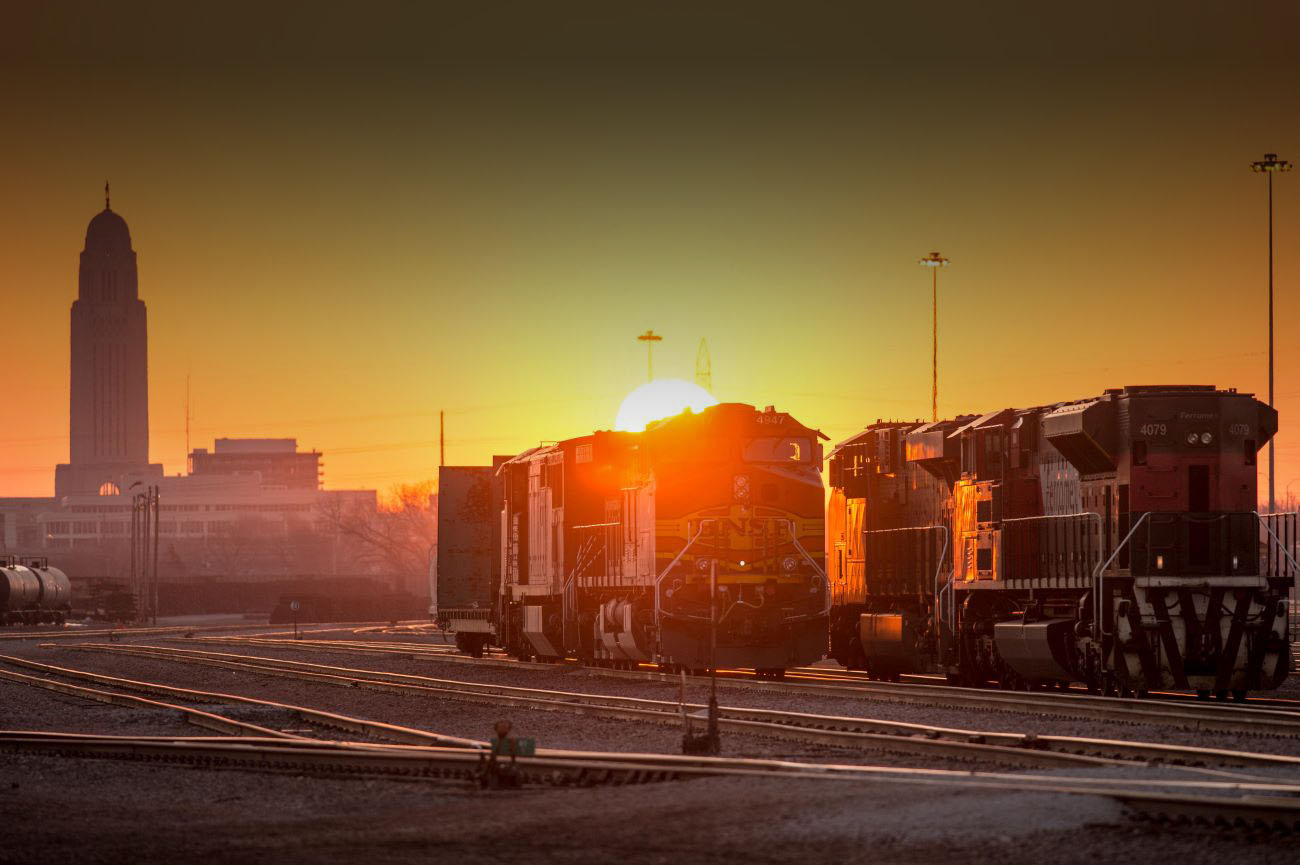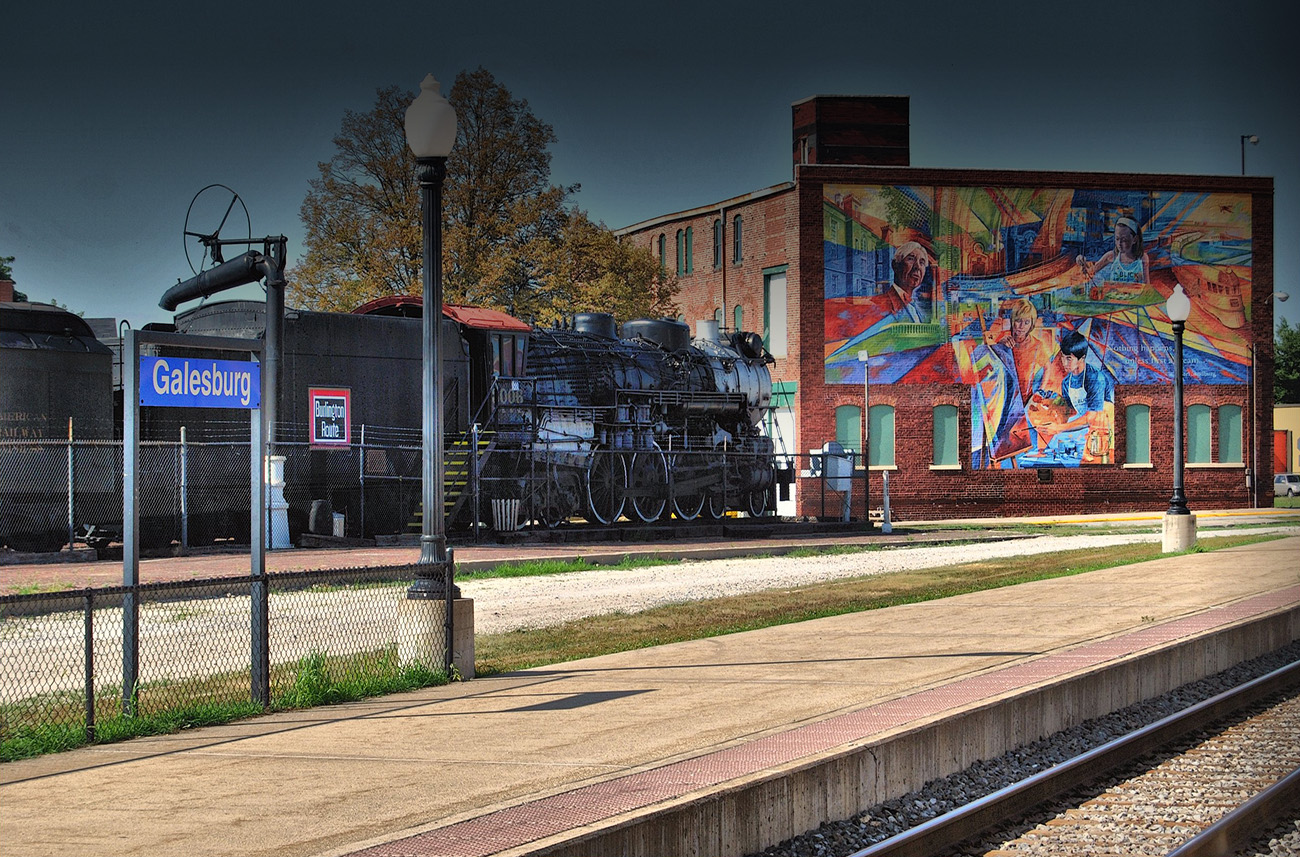Legend and legacy: 175 years of BNSF and counting
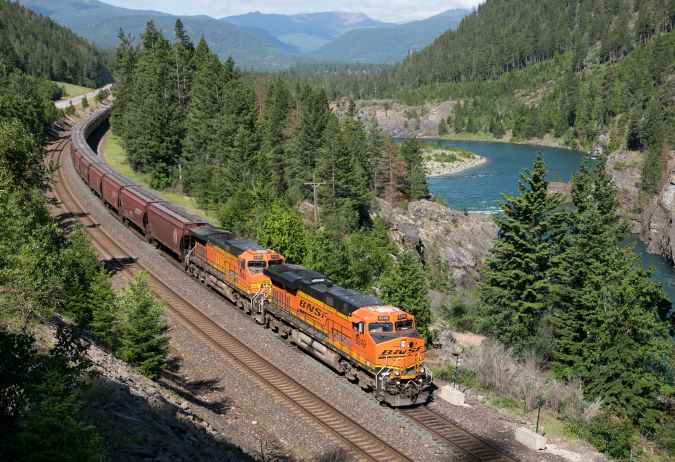
It was 175 years ago today, February 12, 1849, that the Illinois General Assembly chartered the Aurora Branch Railroad, a six-mile-long track between Batavia, Illinois, and West Chicago. Chugging along with borrowed equipment and secondhand steel tracks, little did the branch line, nor the developing American economy, know this small railway would grow into one of the largest North American railroads.
Now serving 28 states in the western two-thirds of the U.S., three Canadian provinces and five key Mexican gateways with 32,500 route miles of track, we’re proud of our humble beginning.
“Our legacy of growth and innovation was made possible by generations of resilient and dedicated railroaders from more than 400 predecessor rail lines, leading up to the people of BNSF who continue that tradition today,” said BNSF President and CEO Katie Farmer.
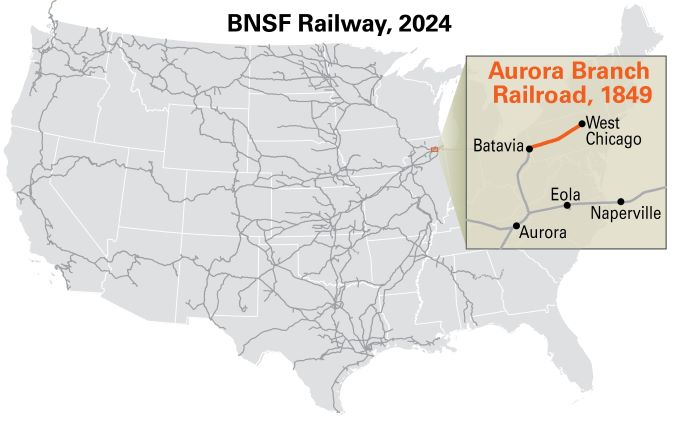
The Aurora Branch Line (1849)
This little-railroad-that-could was founded in 1849, and though many doubted its success, the Aurora Branch soon became the second railroad to reach Chicago. By 1852, a group of investors purchased the small line and expanded its reach by 400 miles. The Aurora Branch name was changed to Chicago, Burlington & Quincy to better describe its trackage, which now reached these Midwestern towns.
The Chicago, Burlington & Quincy (1849-1970)
Reigning over the Midwest for 106 years until the Burlington Northern merger, the Chicago, Burlington & Quincy (CB&Q or Burlington Route) progressed rapidly following the conclusion of the Civil War with an accumulation of 204 smaller railroads – tripling the Burlington Route’s size.
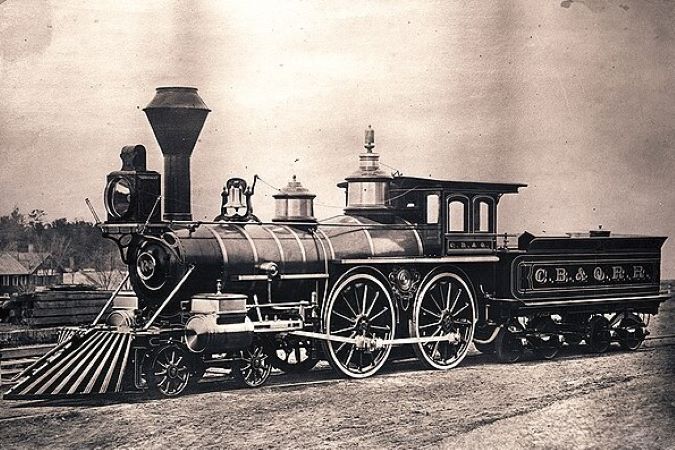
Crossing the Mississippi and Missouri rivers quickly opened new routes to the West through Iowa and Nebraska. Summiting the Rocky Mountains, the Burlington Route created the first direct rail route from Denver to Chicago.
But it didn’t stop there.
Forging north, the railroad trekked along the Mississippi River to St. Paul, Minnesota. It didn’t take long for the Burlington Route’s growth to be noticed by James J. Hill, founder of the Great Northern Railway (GN). Hill’s GN, in collaboration with the Northern Pacific Railroad (NP), purchased more than 97 percent of the Burlington Route’s stock in 1908, paving the way for a long, fruitful relationship.
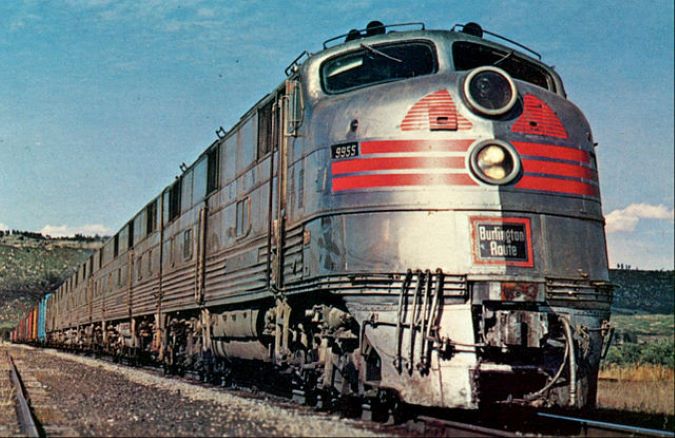
Gaining a reputation for innovation and safety, the Burlington Route was one of the first to implement centralized traffic control by the end of the 1950s. The railroad also ventured into a successful era of passenger transportation with routes serving major cities.
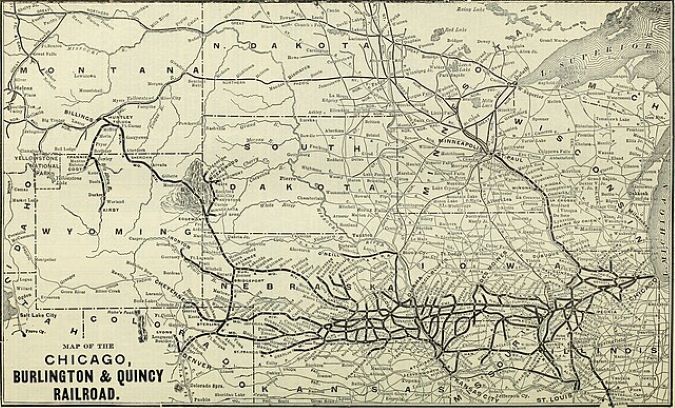
The CB&Q, along with Hill’s other investments, would eventually create the Burlington Northern Railway (BN) in 1970.
St. Louis-San Francisco Railway (1876-1980)
In 1876, the St. Louis-San Francisco Railway (SLSF or the Frisco) helped transform the American heartland. Getting its start from the former Atlantic and Pacific Railroad (A&P), the Frisco’s tracks wove across Kansas, Missouri, Arkansas, Oklahoma and Texas, leaving an indelible mark on the landscape and economy of the South-Central U.S.
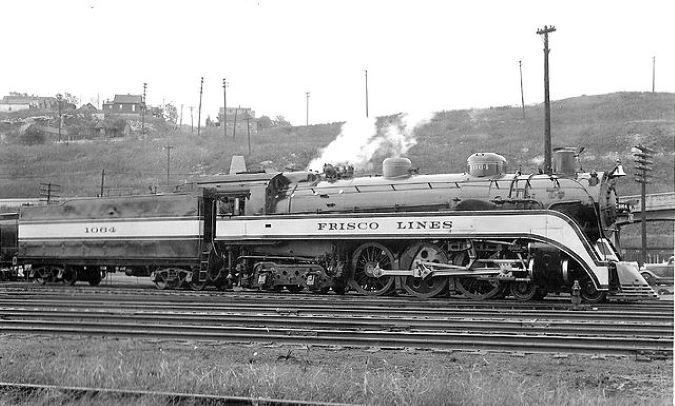
Despite intending to become a transcontinental railroad, the Frisco would never reach its namesake. The growing Santa Fe acquired control of the line in 1879 using the Atlantic and Pacific franchise and most of its land grant to build its own line from New Mexico to California.
With Santa Fe controlling its western portion, the Frisco expanded in the growing heartland. By establishing long-term leases with localized railroads and gaining control of lines from Kansas City to Springfield, Missouri, and Memphis to Birmingham, Alabama, the Frisco made its niche.
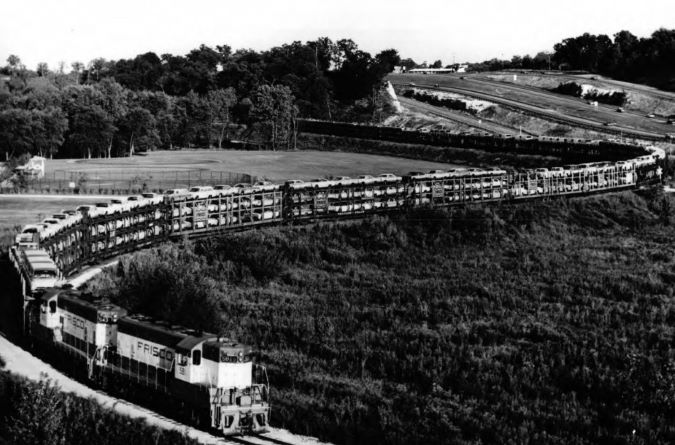
The Frisco was deeply affected by the Great Depression and went bankrupt in 1933 but re-emerged during World War II. Burlington Northern acquired the Frisco in 1980.
Great Northern Railway (1857-1970)
In the Gilded Age, skepticism loomed over the expansion of railroads, but in the face of doubt, visionaries emerged to reshape history. One was Hill, aptly named “The Empire Builder.”
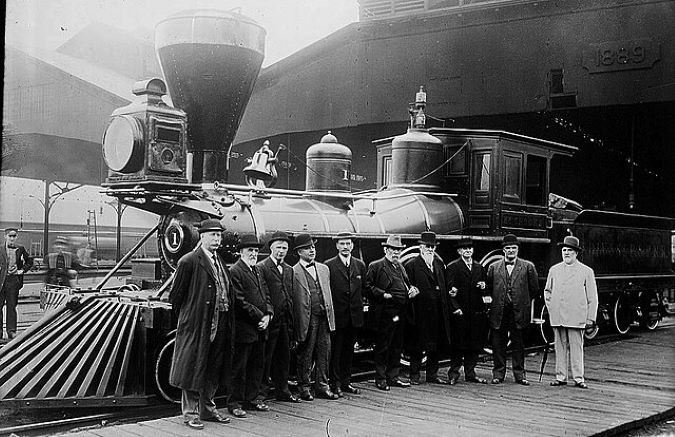
Hill purchased the bankrupt St. Paul and Pacific (SP&P) and Minneapolis and St. Cloud (M&StC) railroads; from these the GN emerged in 1890, stretching from St. Paul to the distant reaches of Seattle. Hill’s expansion was strategic, incrementally building profitable lines without succumbing to overwhelming debt or relying on government land grant money.
Despite persistent skepticism, Hill transformed the GN into a force that shaped the West. Hill not only defied expectations but actively populated the developing region by selling homesteads to pioneers, facilitating their journey with specially furnished trains. Aggressive advertising in European newspapers and overseas agents fueled immigration, turning Hill’s vision into a reality. The GN continued to expand across the Northwest by strategically bringing industries to its growing network in Wisconsin, Minnesota, North Dakota and Montana.
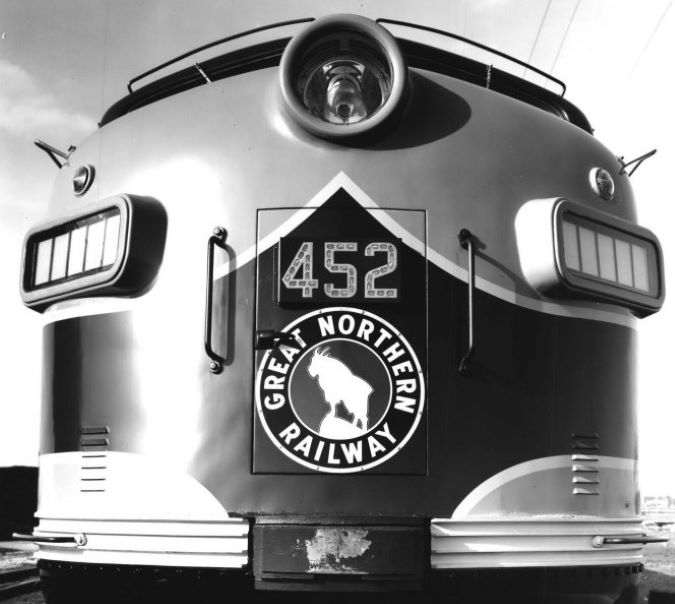
Hill’s success with the creation of GN inspired him to continue rail ventures. Going on to create the Spokane, Portland & Seattle Railroad (SP&S) and become a shareholder of the CB&Q alongside Northern Pacific, Hill built a rail empire. Hill’s legacy lived on as the railroads he owned and influenced merged with GN in 1970, giving life to Burlington Northern.
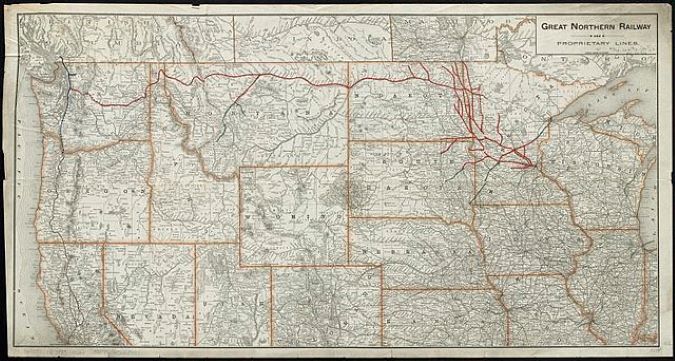
Atchison, Topeka & Santa Fe Railway (1859-1995)
As GN expanded across the northern U.S., the Southwest was rapidly growing. Fueled by the rush for California gold and the cattle drives from Texas to Kansas City, entrepreneur Cyrus K. Holliday sought to follow the path of the Santa Fe Trail by rail. Holliday was also one of the founders of Topeka, Kansas.
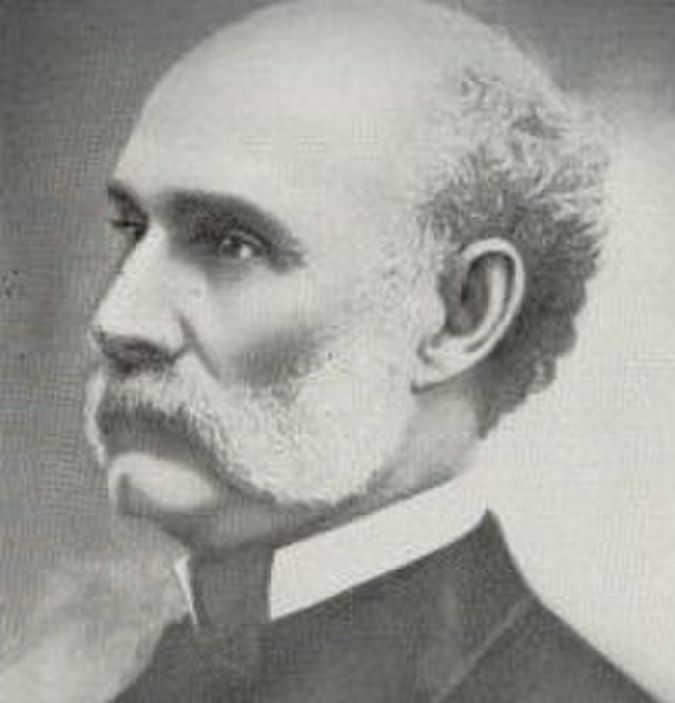
In 1859, the Atchison and Topeka Railroad Company was chartered, and by 1863, the railroad became the Atchison, Topeka & Santa Fe Railway (ATSF) and adopted its iconic nickname, the Santa Fe. It grew to around 9,000 miles by the 1890s.
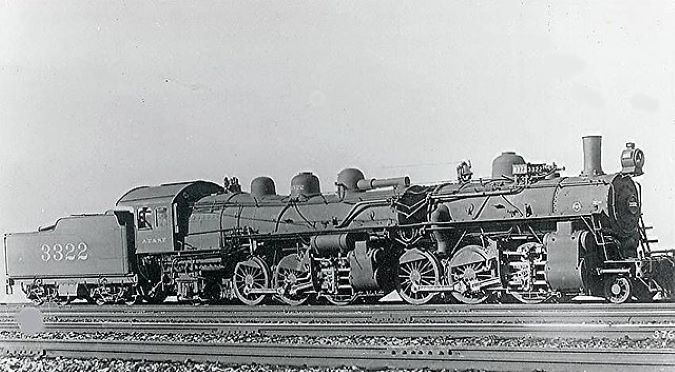
After a reorganization in 1893, Santa Fe connected Chicago to the sun-kissed landscapes of California, creating a network of more than 11,000 miles by 1920. Despite its name, it never reached Santa Fe, New Mexico.
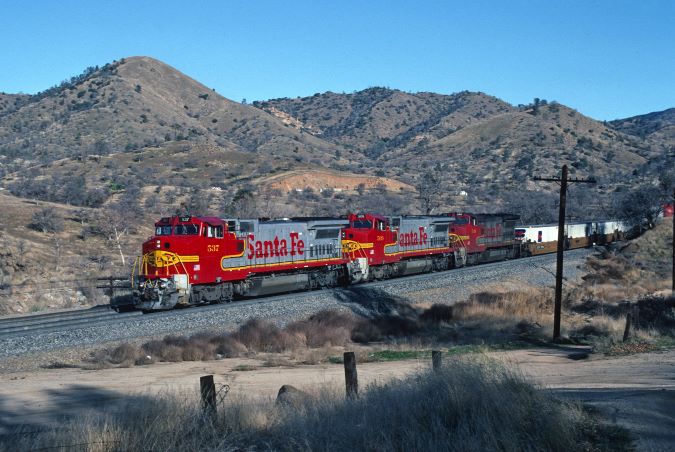
The Santa Fe painted its legacy across 12 states, its freight revenues stemming from a diverse array of intermodal traffic, agricultural products, chemicals, vehicles and industrial materials.
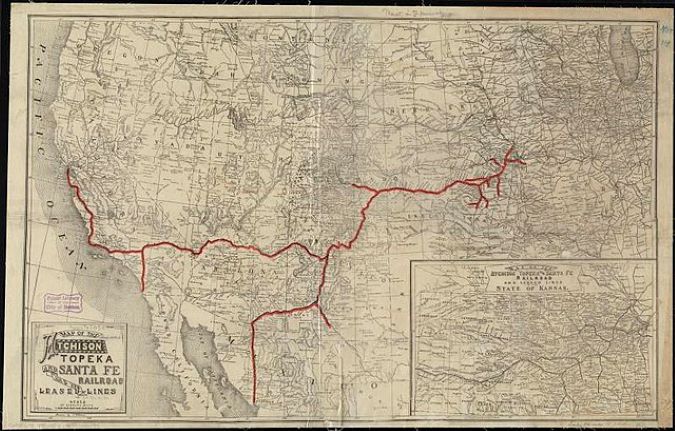
Northern Pacific Railway (1864-1970)
NP got its start in 1864 following an act of Congress signed by President Abraham Lincoln to create another railroad in the north. Surveys and other detail provided decades earlier by famed explorers Meriwether Lewis and William Clark contributed to NP’s ability to chart an efficient route through undeveloped terrain. NP would eventually reach from Lake Superior to Puget Sound.
As the wheels of progress turned, in 1872 NP built a route from Fargo to Bismarck, North Dakota. With bold strokes, it carved an isolated segment from Kalama, Washington, to Tacoma along the Columbia River.
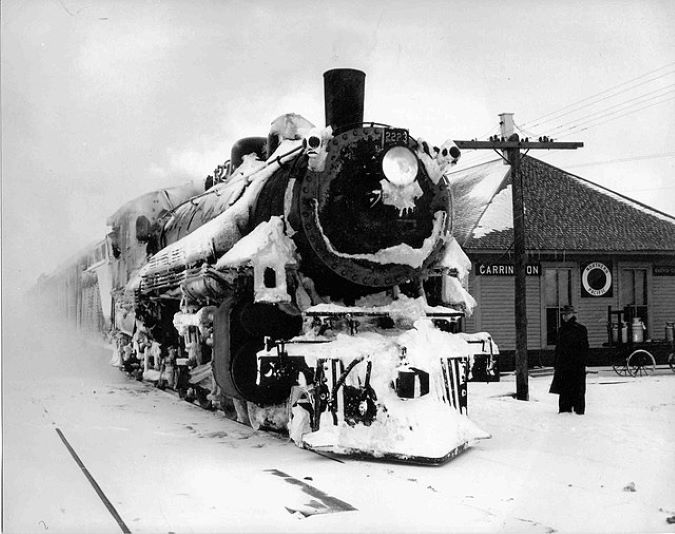
In September 1883, NP’s final spike was driven at Gold Creek, Montana, completing a second transcontinental route across the northern territories from the shores of Duluth, Minnesota, to Wallula Junction, Washington.
Soon NP set its sights on a direct line from Pasco, Washington, scaling the formidable Cascade Range to reach Tacoma. The race to Tacoma unfolded against the backdrop of a booming Puget Sound area. In 1887, the dream persisted as the Pasco-Tacoma line materialized, its inaugural journey navigating temporary switchbacks over Stampede Pass until the grand unveiling of the Stampede Tunnel in May 1888.
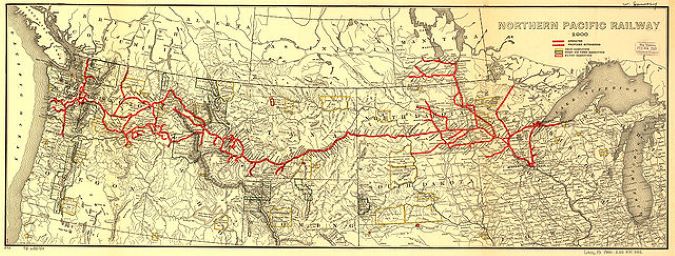
The NP operated until 1970 when it joined GN, the CB&Q and the SP&S in creation of the BN.
Fort Worth & Denver (1873-1970) and Colorado and Southern (1881-1970)
In the late 19th century, a line was needed between Texas and the Rocky Mountains. The histories of Colorado and Southern Railway (C&S) and the Fort Worth & Denver Railway (FW&D or the Denver Road) began with a shared vision.
John Evans, a doctor and prominent rail investor, sought to connect Colorado to the Gulf of Mexico. In 1881 he founded the Denver and New Orleans Railroad (D&NO), which would become the C&S. Meanwhile, the city of Fort Worth, Texas, envisioned a Gulf-to-Rockies route, leading to the creation of the FW&D in 1873, with construction under Gen. Grenville M. Dodge.
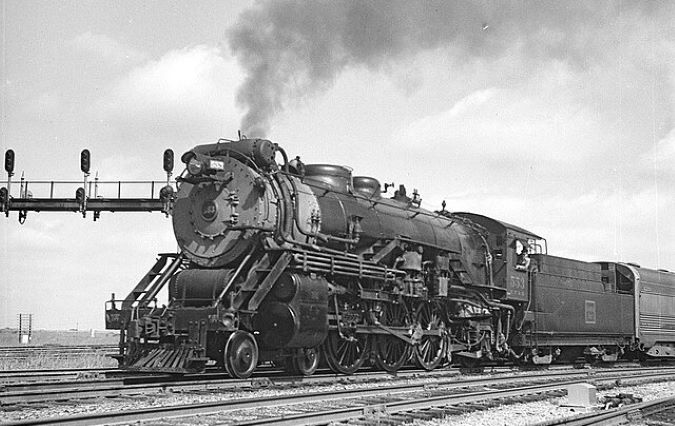
The D&NO negotiated with the FW&D, but challenges arose. Evans faced opposition from established railroads like the Rio Grande, Santa Fe and Union Pacific, and in 1885, Evans' venture was reorganized as the Denver, Texas and Gulf Railroad Company.
Negotiations between Evans and Dodge led to an 1887 agreement, closing the gap between Pueblo, Colorado, and Quanah, Texas. That same year, the Denver, Texas and Fort Worth Railroad was formed, connecting Pueblo to the Texas-New Mexico border. A year later, it linked with FW&D, realizing the Gulf-to-Rockies vision.
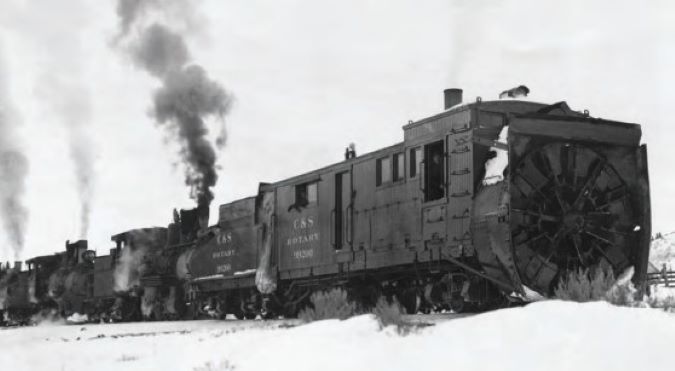
Incorporated in Colorado in 1898, the C&S comprised nearly 30 railroad companies, combined 1,085 miles of track and held a controlling stock interest in the FW&D. In 1908, both the C&S and the FW&D became a part of the CB&Q.
Spokane, Portland and Seattle Railway (1905-1970)
In the early 20th century, the Pacific Northwest rail map was divided by the Columbia River and two major competing rail lines: GN and NP. The Spokane, Portland & Seattle Railway (SP&S) emerged in 1908 on the north bank of the river as a joint venture of both railroads.
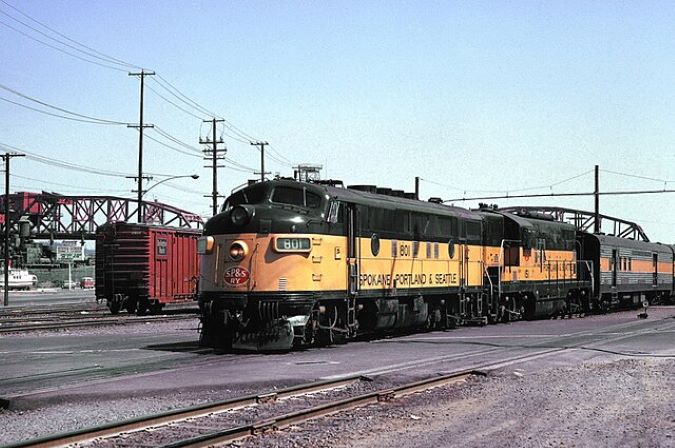
With GN and NP tied together in the stocks of the Burlington Route, the collaborative development of the SP&S earned the nickname “The Northwest’s Own Railway.” The SP&S connected Portland, Oregon, to Spokane, Washington, and thrived as a West Coast freight route. Less motive power was needed to move heavy trains along the flood plains and the shores were natural settlements for the growing population.
Like its founders’ other rail networks, SP&S was part of the merger to create BN in 1970.
Burlington Northern (1970)
One of BNSF’s two namesake predecessors, BN was the result of a long-awaited merger between four rail lines: GN, NP, SP&S and CB&Q.
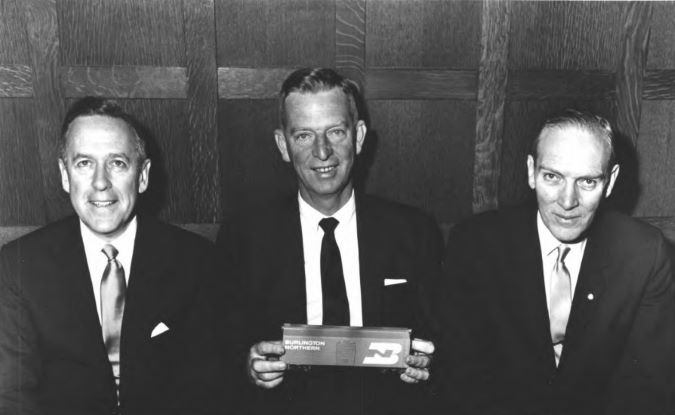
As BN was signed into existence, the company prided itself on becoming America’s first mega-railroad with more than 20,000 miles of track connecting Texas’ Gulf Coast to the northern Midwest and to the Pacific Northwest’s ports.
Agricultural products, including corn, wheat and soybeans were the biggest segment of BN’s business. It was the country’s biggest transporter of grain. Another major business for BN was coal originating from the Powder River region of Wyoming. It also shipped automobiles, chemicals and forest products, among other commodities.
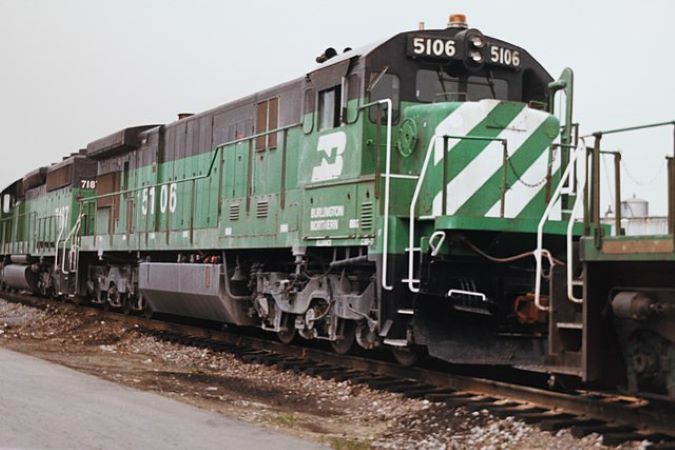
BNSF Railway (1995)
In 1995, BN merged with the Santa Fe to create America’s largest rail network and form the company we are today, BNSF Railway.
“Having started my career with the Burlington Northern, I had the opportunity to witness – and work through – one of the most influential railroad mergers,” Farmer said. “Built on the values of the roads before us, BNSF is committed to adapting to the changing markets and innovating for the future. I believe our brightest days are still ahead of us.”
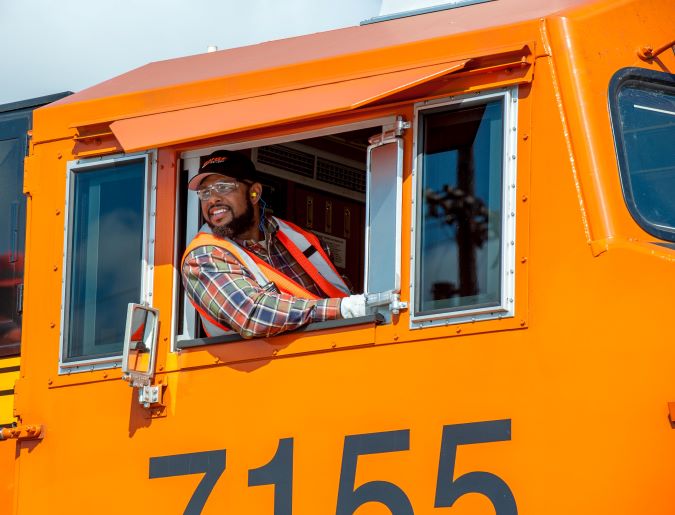
February 12 is an important date for BNSF for more than one reason. Coincidentally, that’s also the date that conglomerate Berkshire Hathaway, Inc., led by investors Warren Buffett and Charlie Munger, completed its acquisition of BNSF in 2010. With the acquisition, BNSF joined a group of dozens of respected companies and started a new chapter in its long history.
After 175 years, BNSF is a crucial underpinning of the nation’s supply chain and proudly continues to move the freight people need to live their lives. Thank you to the countless railroaders who, from the 19th Century to the 21st, have connected and continue to connect our nation’s markets to the rest of the world. We look forward to the next 175!
SP&S photo published under Creative Commons license.
Did You Know?
The History of BNSF: A Legacy for the 21st Century is a detailed history of BNSF, full of photos and a genealogy of BNSF’s many predecessor lines. You can view it as a PDF here.
